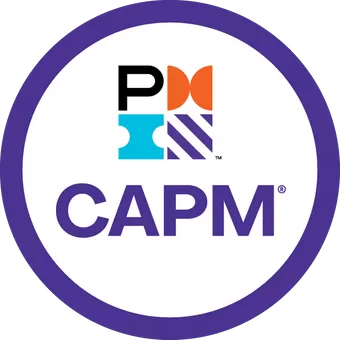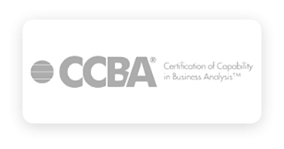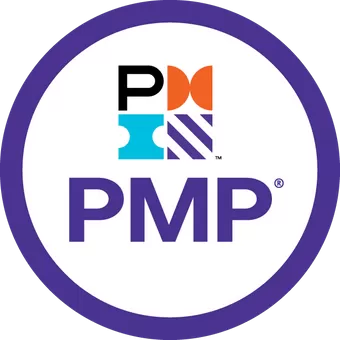
SWOT Analysis vs. PEST Analysis - Decide Which is Right For Your Business
Written By : Bakkah
15 Jan 2024
What is SWOT analysis and PEST analysis?
SWOT analysis and PEST analysis are simple business tools that can help you develop targeted marketing strategies to grow your business. Although both have similar objectives, SWOT analysis, and PEST analysis have fundamental differences that provide a different approach to improving your marketing strategy. The article below discusses PEST analysis and SWOT analysis and what they bring to the business table.
What is a SWOT Analysis?
The Term SWOT is an abbreviation of Strengths, Weaknesses, Opportunities, and Threats. A SWOT analysis is a tool that helps businesses create a marketing strategy that answers present and future business opportunities.
There are four basic elements in a SWOT analysis. Strengths and Weaknesses are internal to the organization. Examples of strength include the organization's ability to produce products that are cheaper compared to its competitors or a weakness caused by improperly trained employees.
Opportunities and Threats are elements that are not directly under control by the organization. A new market for your product, for example, can provide you with opportunities. Threats, on the other hand, include a competitor selling similar products at a lower price.
A SWOT analysis helps identify your organization’s position and competitiveness. It provides you the opportunity to create a business strategy based on facts and research.
The key to creating a successful and effective SWOT analysis is to ask the right questions. More detailed questions translate to better data.
What are the Strengths in SWOT Analysis?
Strengths in SWOT Analysis are factors that are innate in your organization. These are things within your organization’s control and can be tapped to improve your strategy.
- What strategies worked best in the past?
- What are your strengths based on competitor feedback?
- What do customers like best about your brand?
- What is your advantage in terms of company assets (finances, workforce, management, production capacity)?
- What business relationships help you compete in the market?
What are the Weaknesses in SWOT Analysis?
Weaknesses in SWOT Analysis are factors that can be found internally or within your organization and can affect your competitiveness.
- What do competitors do better (lower prices, better product features)?
- What do customers dislike about your products?
- Do you require additional equipment?
- Are your employees and management adequately trained?
- What is your market penetration? Are you reaching your target market?
What are the Opportunities in SWOT Analysis?
Opportunities in SWOT Analysis are market openings, and outside factors can be taken advantage of to provide additional opportunities for growth.
- What are the possible areas where you can apply your strengths?
- Is there a shift in customer attitudes and needs?
- Are there any new changes in business practices that your organization can take advantage of?
- Are you maximizing your market exposure, any new markets?
- Can you make production more efficient?
- Is your competitor suffering from negative customer sentiment, and can you attract these customers to your business?
What are the Threats in SWOT Analysis?
Threats in SWOT Analysis are external factors that can hurt your business. Competitively priced products, or upcoming products that can affect your sales numbers.
- Is your product able to meet customer demands?
- Are there any new products in the market that is in direct competition with your products?
- Are your competitor’s products cheaper and better?
- Is there a customer shift from your products or services to your competitors?
- Are your competitors developing newer and better products?
- Is your business financially viable or suffering from cash flow problems?
- Are your employees satisfied and performing to the best of their ability?
How to Do A SWOT Analysis?
A SWOT analysis is a business tool that is used for documenting an organization's Strengths, Weaknesses, Opportunities, and Threats. This can be a handy tool for helping businesses achieve short-term and long-term goals.
Step1: Determine the Objective
To maximize the benefits of your SWOT analysis, you should first determine a clear goal or objective. Ask what the purpose of the SWOT analysis is. Would this be used for introducing a new product or improve your service?
Step2: Make initial research on your business and market
Performing initial research on your main competitors and the current market will help you create a more comprehensive and targeted SWOT analysis. You could ask your personnel or business partners for input on how to go about the research.
Step3: Determine your Strengths
The first element in a SWOT analysis is Strengths. In this step, you aim to identify your advantages over the competition. This can include your workforce, financial resources, the number of products and services you provide, the price of products, and your production capacity.
Step4: Identifying your Weaknesses
Gauge your weaknesses by comparing your products, and services with those of your competitors. To get a more detailed look at your weaknesses, try checking your sales numbers over the years and where you are experiencing a shortfall. Declining sales numbers, for example, can be traced to poor production practices that can lead to more expensive products.
Step5: Identifying Areas of Opportunities and Growth
This should not be confused with your internal strengths. These are opportunities that are outside your control but provide you with an opening for growth. A previously untapped market for your products can give you an instant way of boosting your sales. Consumers searching for a different type of product that is currently not in your inventory should be an opportunity worth exploring. New manufacturing processes that decrease production time while improving efficiency can help you save on production costs.
Step6: Determining Possible Threats to Your Business
Identify all possible factors that can negatively influence your business. This can include inflation, new products, and unemployment.
Step7: Determining Priorities
After determining the factors contained in the four elements of your SWOT analysis, it is now time to determine priorities. Although all of these are important, prioritizing which you should focus your energies first on those that can get you the best and quickest results.
What is PEST Analysis?
PEST analysis is a tool used for determining how different factors affect your business. PEST is an acronym for Political, Economic, Social, and Technological elements. PEST analysis is a management tool that assesses all major external factors that can influence a business, and its current and future operations. Like its SWOT analysis counterpart, PEST analysis is often used to increase competitiveness in the market.
A variation of the popular PEST Analysis format is currently being employed in the U.K. It now includes two additional elements, Legal and Environment. The PESTLE analysis aims to give a more comprehensive picture of all external factors affecting a business.
What is Political in PEST Analysis?
Political in PEST Analysis refers to government regulations or legal elements that influence business operations. It includes government policies that can have an influence on industries and the economy in general. Factors include political stability issues, peace and order, employment laws, trade policies, and tax guidelines.
What is Economic in PEST Analysis?
Economic in PEST Analysis is a country's economic indicators and overall performance. Factors include interest rates, inflation, unemployment, and current consumer confidence. Inflation for example can affect the buying powers of consumers, driving prices higher, which can result in lower sales numbers.
Higher interest rates could also affect business operations making it more expensive to borrow additional capital.
What is Social in PEST Analysis?
Social in PEST Analysis is the social factors that focus on the socioeconomic elements that influence the market. This includes education, lifestyle, culture, demographics, and attitude. By understanding these factors, the business can create marketing strategies that are customer-centered.
An example of this includes an increase in sales during the holidays. By following this, businesses can increase product output in anticipation of customer demands during this period.
What is Technological in PEST Analysis?
Technological in PEST Analysis is no denying the critical role technology plays in everyday business operations. Automation can increase production and lower production costs. Research into new technology enables the creation of better products.
PEST Analysis Checklist
PEST analysis is used for making marketing and business strategies that address development, decision making, and competitive planning. The first thing to consider when creating a PEST analysis is to define the subject of the research clearly, this include:
- A business studying its market
- A product launching
- Determining brand perception
- Acquisition
- Exploring a partnership
- Investment
Below is a sample PEST checklist that serves as a guide for making current and future changes in your marketing strategy. You can create a PEST analysis by identifying the different factors in the four PEST (Political, Economic, Social, and Technological) sections.
Political PEST Analysis Checklist
- Government legislation on the home market
- Ecological/environmental policies
- National and international legislation on business
- Regulatory agencies and policies
- Trade agreements
- Lobby groups
- Government grants and initiative
- Peace situation/ conflicts
- Forward-looking economic policies
Economic PEST Analysis Checklist
- Current economic situation
- Economic trends (national/international)
- Business taxes
- Specific taxes on products and services
- Market cycles
- Market access (transportation, road network, ports)
- Currency exchange rates
- Interest rates
Social PEST Analysis Checklist
- Demographics
- General customer attitudes and sentiment
- Popular culture
- Fashion trends
- Religious factors
- Ethical issues
Technological PEST Analysis Checklist
- Latest developments
- Manufacturing process
- Intellectual property/license
- Product research
- Automation
- Innovation
SWOT Analysis Versus PEST Analysis – Which is Better?
The first thing we must understand is that this is not a competition. Rather than comparing SWOT Analysis and PEST Analysis, we should understand their capabilities and limitations. This way, we could apply the appropriate strategy according to our needs. Both planning methods are designed to give deeper insight into our business and its processes. It tries to answer what can be done or how you could perform better.
One major shortcoming using PEST analysis is that it does not take into consideration internal factors. It considers all the different factors that can affect your project or business. PEST analysis's biggest strength is also its greatest weakness. A PEST analysis is designed to be simple. It is outward-looking but does not consider internal factors, which can have a more significant effect on the health of the business.
SWOT analysis offers a more comprehensive study of both internal and external factors affecting your business. However, it does fall short in terms of researching all positive and negative external factors. What is a better process? The answer is both have their shortcomings. Both SWOT analysis and PEST analysis should be employed to give your business better opportunities to grow.
The best strategy is first to conduct a comprehensive PEST analysis. It is used to determine all external factors. A SWOT analysis is then conducted to check for all internal factors that can affect your performance. By combining these two strategies, you can get a more comprehensive picture of the different factors that can influence your current and future marketing strategies.
Best Resources To Learn About Business:
Here are the best resources to assess you in your business and make it more professional:
- Project Management Courses
- Certified HR Courses
- Certified Business Analysis Courses
- Certified IT Courses
- Supply Chain Management Courses
- Quality Management Courses
- AgileSHIFT® Courses
- CCMP™ - Certified Change Management Professional
Bakkah Learning Team.







